Spring, flower alarm clock
Flores, tool to conquer the earth
Orchids, Attractive Scams
Large capacity of adaptation

Not all plants bloom in spring. Rice and soybeans, for example, bloom when they begin to shorten the autumn days. In any case, we all know that spring is the season most chosen to bloom.
The plants are in vegetative phase before starting the flowering process. However, certain conditions make the phase of reproduction of the flowers begin, giving rise to the production of the flowers. These conditions can be endogenous, characteristic of the characteristics of the plant, and exogenous, of the medium. Among the endogenous are, for example, the age of the plant and the development cycle. Between the conditions of the medium can be influenced by the length of the days or photoperiods, the intensity and quality of light, the temporal influence or coldness of the cold, the temperature, the water and the availability of food, etc.
The mechanisms that cause flowering are of great interest to many researchers, who have been able to know in detail analyzing the small herb Arabidopsis thaliana. Analysis of the functions of genes is the key to understanding these mechanisms.
Longer daysSome plants have genetic awakeners that give the order to wake up and move on to spring flowering. Often, the increase of light hours activates the awakeners of the flowers. The plant's light detectors and biological clocks collaborate to start flowering.

For this purpose, the plants receive luminous signals through the photoreceptors. Each photoreceptor reacts to a certain type of light rays. Phytochromes take red and red far away and cryptochromes blue and ultraviolet. According to light, photoreceptors modify the expression of the gene encoding the protein Constans (CO). When the day is longer, the CO protein builds up and sends a message to start flowering.
For this process to occur, photoreceptors perform opposite functions to cause variations in the amount of CO. Some produce CO protein degradation, but others inhibit its degradation. In light hours, cryptochromes and phytochrome A prevent the breakage of the CO protein. However, under the influence of the morning red light, phytochrome B drives this breakage.
When the day begins to lengthen, cryptochromes and phytochrome A work longer hours. As a consequence, they preserve more proteins and gradually the concentration of CO increases. When enough CO accumulates it sends a message to the other genes involved in flowering.
Through this message, the other genes are activated and all the chemical reactions necessary to flourish are launched. This system is valid for any plant, although the flowering time of each species is different. Early flowering plants require a lower concentration of proteins and those of late higher flowering.
Last winter past winter past winter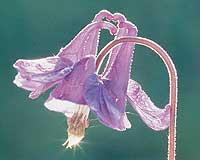

In some cases it is necessary to keep the plant at low temperature before flowering to start the flowering process. This mechanism, called varnishing, is a strategy to measure the length of the winter to know that spring has actually arrived. This process is strongly influenced by the FLC flowering repressor (Flowering Locus C). FLC proteins block blooming by repressing the action of many genes.
When the concentration of FLC is high, therefore, flowering cannot occur. When it is very cold, the concentration is low and when the temperate time comes, it is possible to bloom. This is due to other genes such as the VIN3 gene ( vernalisation insensitive 3 ). This gene, under the influence of cold, eliminates the ability to limit FLC flowering. In this way, the plant goes from an unattainable situation to a dorsal situation. In short, a repressor delimits another repressor, thus favoring the flowering process.
Regardless of the starting route, once the process has begun, a flowering induction occurs. In many plants, the flowers come from the same principles that develop the leaves.
At first, cells are apparently very homogeneous, but have notable differences when they begin to develop in genes. These differences make the floral spice to be distributed in four concentric regions. Externally are the inside, calyx, corolla, androceo (male reproductive organs) and gineceo (female reproductive organ), in which sepals, petals, stamina and pistil are developed.
Development of floral organs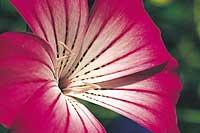
These four parts form the flowers, and although the most striking are the external ones, and especially the petals, the most important are the internal ones, where the reproductive capacity resides. But the external ones also have importance, since they favor the reproduction attracting the pollinators.
The different genes involved in the development of each section. In the most common flowers is given the type of development ABC. In this model, three types of genes are distinguished: A, B and C. Class A genes are expressed in outer sepals and petals; those of class C in gardeners and pistil; and those of class B in petals along with A, and in gardeners along with C.
The expression of A prevents that of C and vice versa. If there was a mutant without A, C would influence all of them, and the flowers would have a sequence of organs from inside out: the pistil, the stamp, the stamp, the pistil.
On a second level, below the action of these genes are other agents that define the appearance of flowers. Some of them are enzymes to synthesize the pigments of the petals, which make the flowers of one color or another. They also define the size and shape of the flowers and, along with their physical appearance, the smell.
All agents involved in flowering are interdependent and each must perform their obligation at the right time so that all chemical processes occur when the conditions are the most appropriate. All of them aim at the proliferation of the plant, developing a form adapted to the medium.
In passing, they fill with colors the fields and margins of the roads so that, if anyone has not yet heard, know that we have spring here.
Angiosperms, or plants that bloom, constitute the majority of terrestrial plants. They preceded the gymnosperms (conifers, among others). These plants, in the Carboniferous, more than 300 million years ago, began to expand to the Cretaceous that dominated the world vegetation.
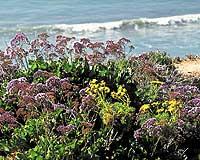
The Gimnospermos already had seeds and this characteristic was important to reproduce in the terrestrial medium. But what the angiosperms noted was having the seeds kept in a closed pouch. At the same time, they developed the flower, providing a reliable and safe sexual reproduction system. The flowers have shown that, in addition to protecting the seeds, they are a perfect design to attract pollinators.
Since the destruction of the Cretaceous and the Tertiary (65 million years ago), the main terrestrial plants have been the process of diversification and consolidation of plants with flowers. They are classified into more than 300 families, with a total of 250,000 species. Among these species are, in addition, the small herbs and the giant trees, with cycles of life weekly and centenarians, that can live in the intense cold and in the heat of the desert, and that, although predominate those of the lands, have adapted to the aquatic means.
The predominance of the flowering plants allowed the creation of new ecological niches and the extension of some old ones. The flowers and fruits were new sources of food and fruit trees were developed. The same thing happened with grouped seeds and granívoras. In addition, along with the species that flourished the insects evolved, they expanded much and, therefore, the insects also increased.
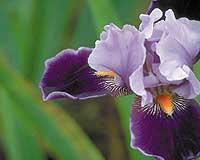
Beautiful, exotic, sophisticated. Orchids have always been surrounded by killings. Except in Antarctica, they live on all continents and are known of all colors, except black ones.
Although most live in tropical zones, they can also be seen in our environment. In Europe, some five hundred species have been classified, of which eighty-five can be found in the Basque Country. Despite their uniqueness, they have the same goal as any other flower, reproduction, and have developed this spectacular look to make it as attractive as possible.
Many orchids begin to prepare flowering on time, as it is a process to be done with great care. In addition to its beauty, the most remarkable feature of orchids is the union of female and male organs. On the other hand, the plants that bloom have the smallest seeds and create flowers that fascinate many people.
But their goal is not to like humans, but insects. In short, the elegant flowers of orchids are nothing more than a perfect tool to attract pollinators. For example, the Ophrys flower is shaped like a female bee and also gives off the smell of female bee hormones. This attracts male bees that are placed on the flower with the intention of copular. The intention of the bees is not fulfilled, of course, but yes the aim of the flower, since the pollen is stuck in the body of the insect. Orchids also deceive pollinators with other smells and make them believe that there is a sweet nectar in the flowers. In these cases insects also extend pollen without prize.
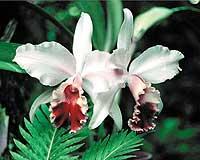
The aspect of flowers has also influenced human beings. Some flowers and other parts of the plants resemble sexual organs, so they have been used as aphrodisiacs for centuries. The name of the genus Orchis, which gives name to the whole family, means “testicles” in Greek. He was named this way because he has two tubers similar to this male section.
Orchids are treasures of collectors and have many symbolic meanings around the world. In China, for example, they are the image of fineness, friendship, perfection, fertility, femininity, nobility and elegance. In this village there is a legend for orchids. According to this legend, the first orchid was a beautiful princess who became a flower because of a witchcraft.
We can find flowers in almost any time and place. It is true that in many areas the vegetation does not bloom, but sometimes the flowers have also adapted to extreme conditions.
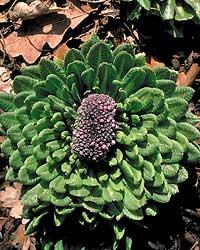
In some areas of the Arctic live numerous plants that have adapted to the short season of the year of development and hostile climate. In most of the year, the climate is hard and the earth looks empty. But in short summer, when the snow melts, flowers of various colors appear. At a depth of one meter, the earth is always icy, but these plants are very competent in the capture of heat and the underlying earth is a few degrees hotter than that of the environment. Precipitation is low, but low temperatures prevent evaporation and facilitate the maintenance of water reserves. In addition, the solid barrier that generates the frozen earth prevents the water from going down.
In the desert, rainfall is as low as in the Arctic, but as in the Arctic, some plants have developed adequate mechanisms to live in the deserts. It can bloom overnight in the desert, under the influence of sudden rain, hot and wet wave, or other relevant factor of momentary character. The flowers and the fruits need a great energy investment for their creation and development, and have little time before losing the humility of the plants. Therefore, they must have a great sensitivity when separating themselves from the intense rain.






